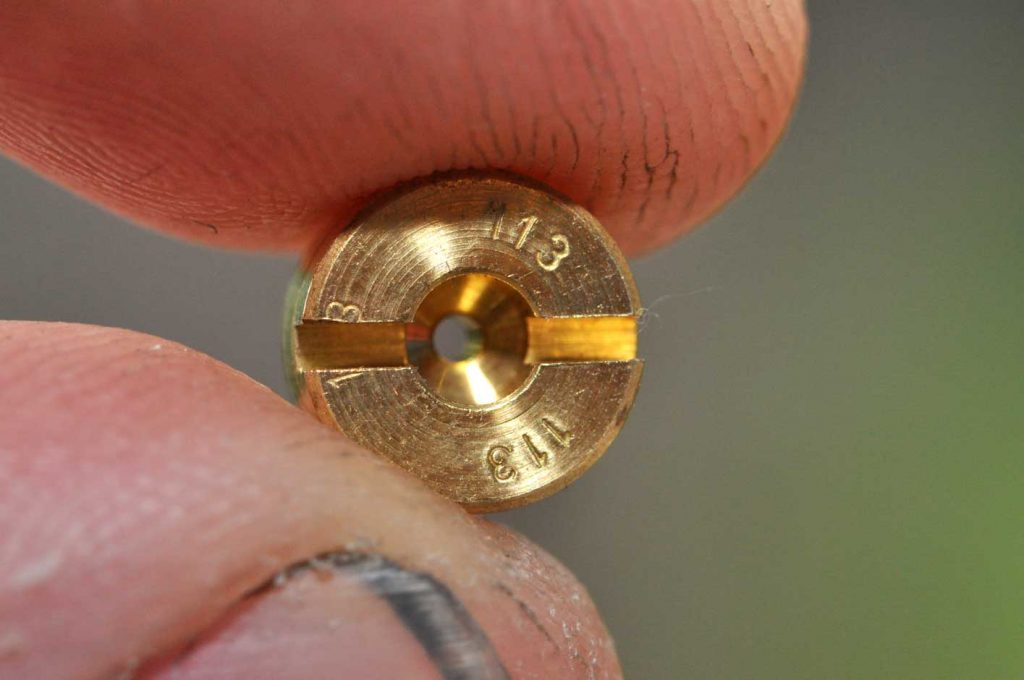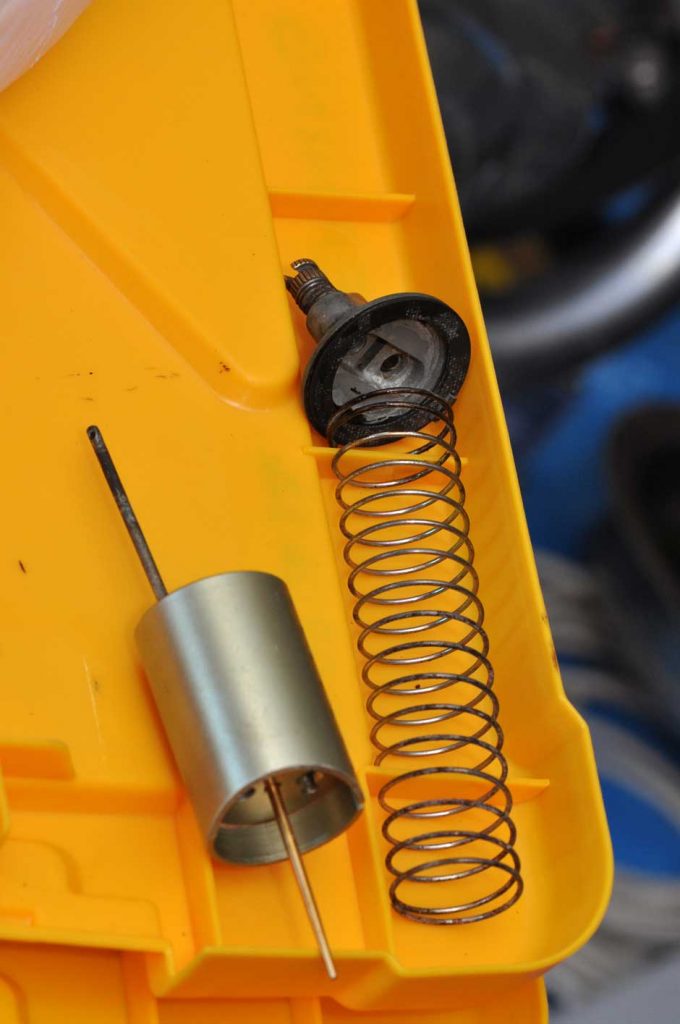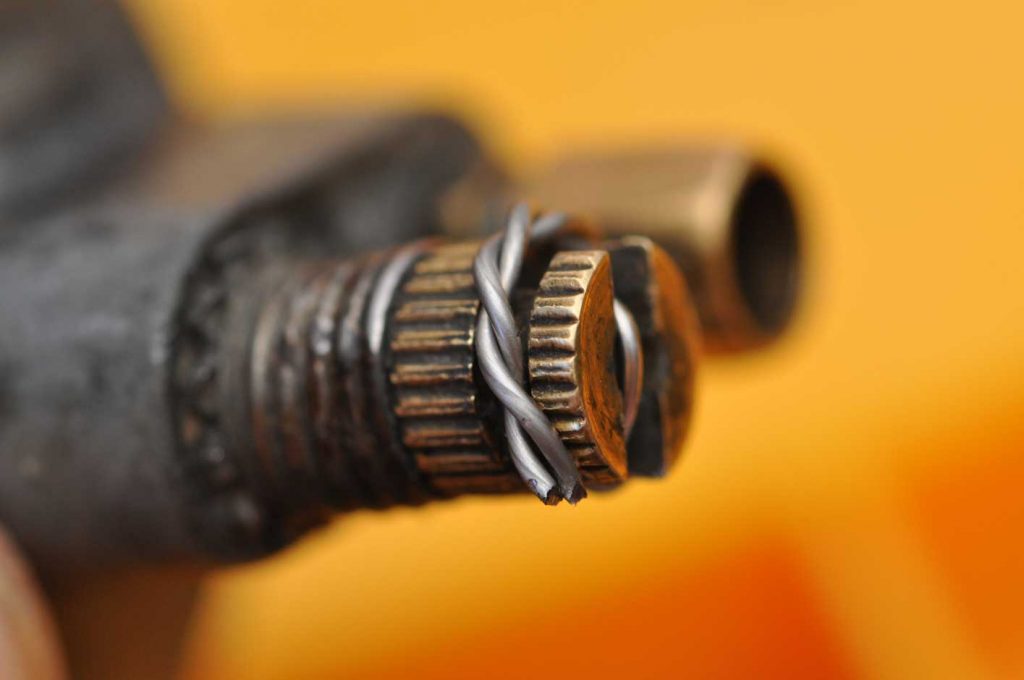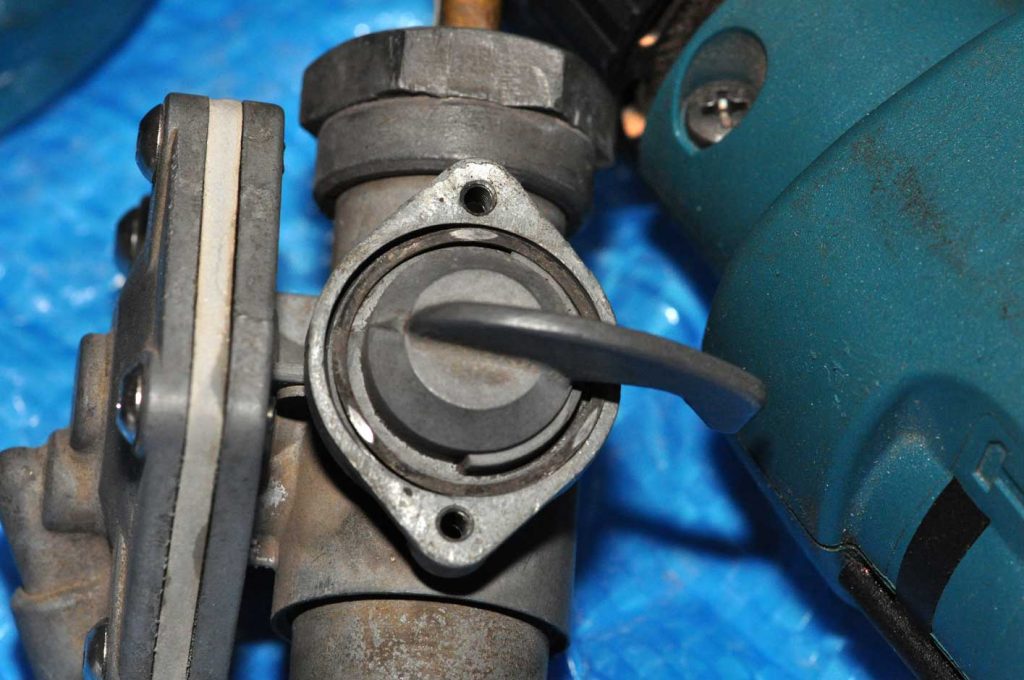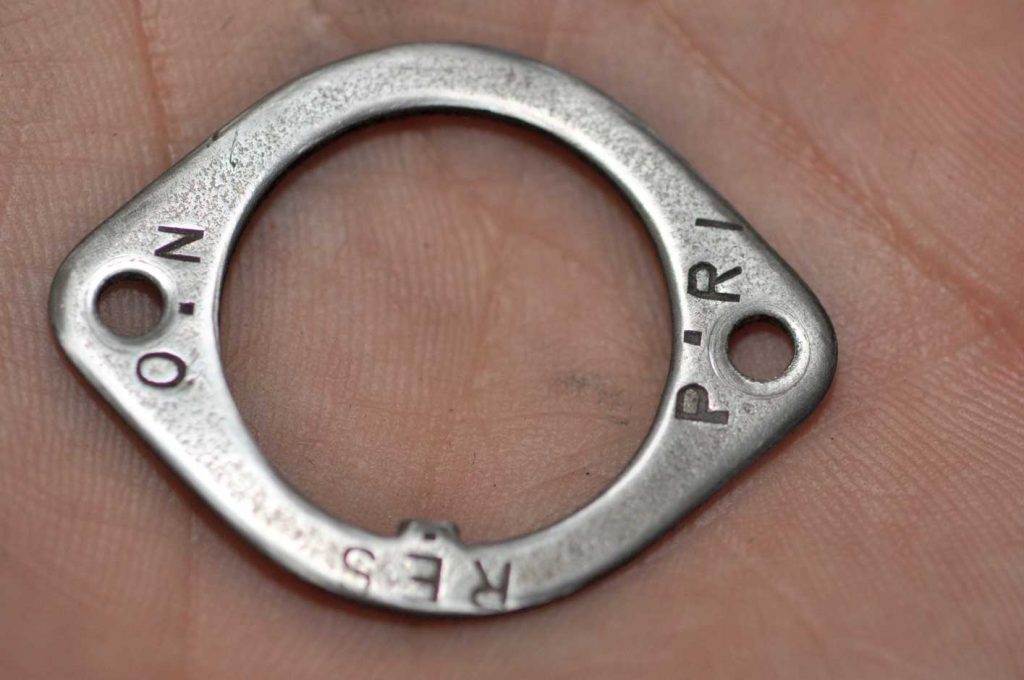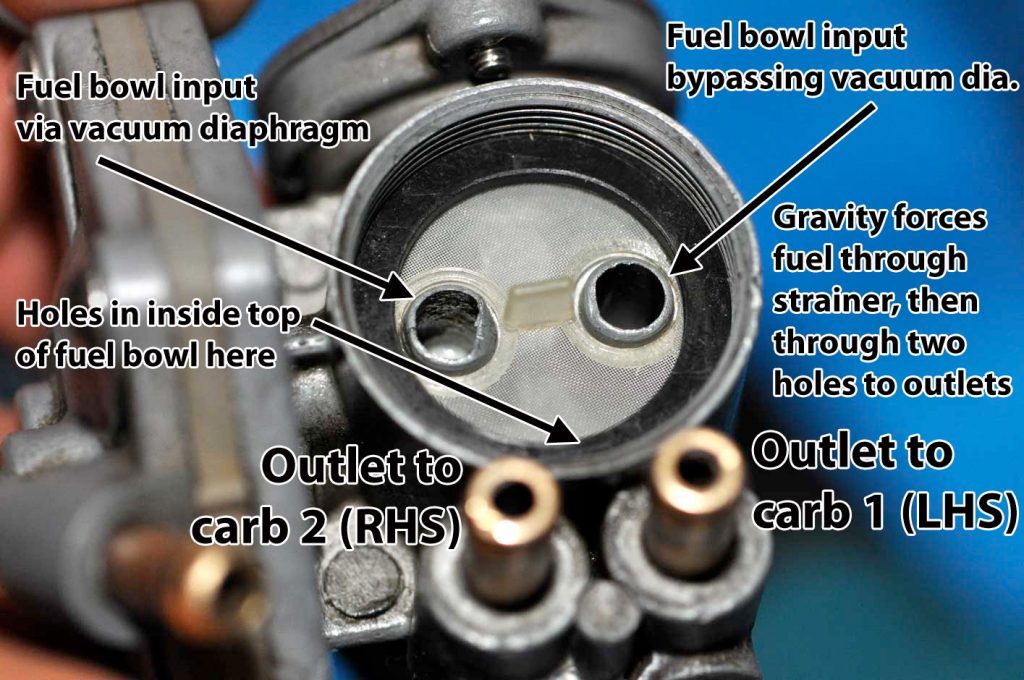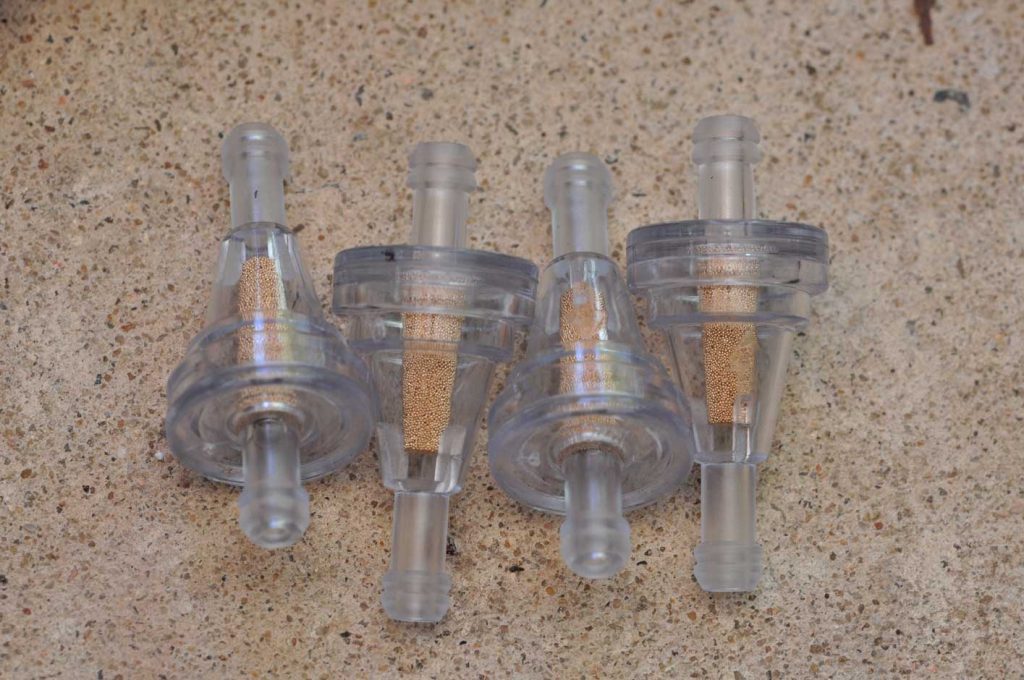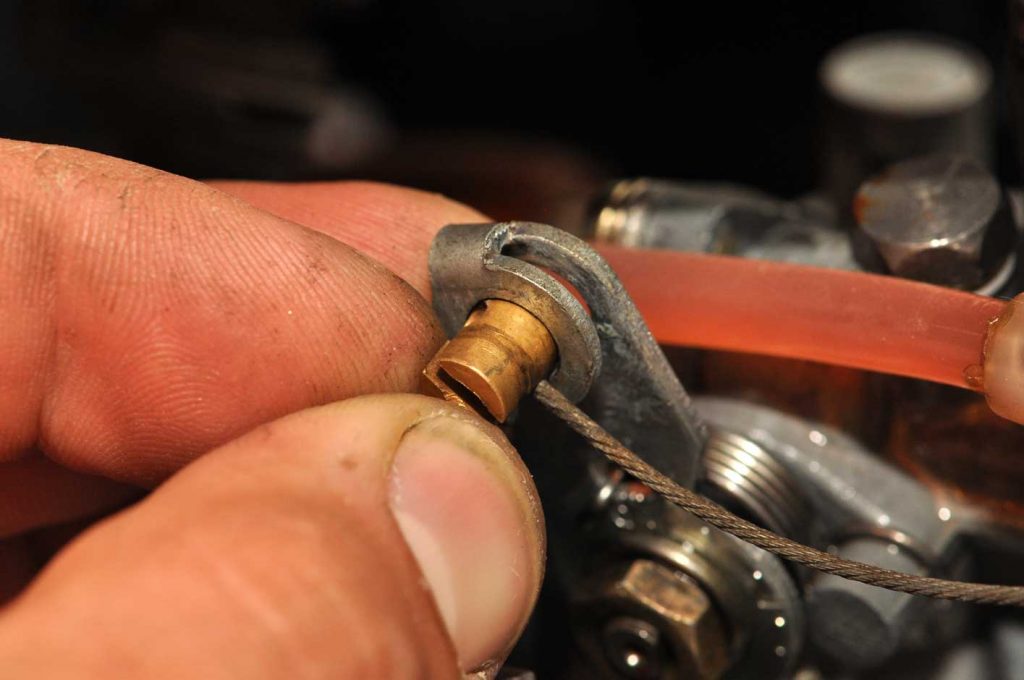1973 Suzuki GT250: Engine and carburettor work
Lots of simple work needed, but this is a placeholder for when I inevitably have to do an engine rebuild
Compression check
Easy check when I first got the bike – hold throttle open and kick the crap out of it to see what compression we have.
Spark plug leads have to come off.
Spark plug tool in to remove the spark plugs
Plugs out, and compression tester along with various adapters. Need M14 adapter for this, but handy to have others.
Screw the compression tester in nice and tight
Kick start only means gotta get out the leg
Throttle cable snapped? No problem, just pull the inner and kick away.
Left hand carb
Right hand carb reading
Good enough to use. Old 2 strokes don’t have that much compression, but this is enough to believe it’s ok.
Fixing up carbs and manifolds
Gotta sort out the manifold studs and the like. Two nuts are the secret. Wind on one, then wind a second one onto it.
Two nuts touching.
To put in the stud, turn the back of the two nuts. Or, turn the front of the two nuts to take the stud out.
Back off the front nut once you’re ready to remove the nuts.
Undo the back nut, then you can take off the other one.
With all the studs installed then that’s all good for the carb and carb manifolds to be bolted onto the cylinders.
Carb gaskets and float valves are pretty useful to stop fuel leaks.
Bits involved in a carb rebuild. Carb kits are reasonably available in places like ebay or some of them via your Suzuki dealer.
Main jet – nice and clean. The ones in the bike were a bit blocked, and the carb kit was cheap enough to buy anyway.
One carb, ready to come apart.
Float bowl off.
Float pivot pin out
Float valve seat.
Float valve seat unscrewed.
Main jet out, note the sealing washer.
Idle air screw ready to be removed.
Removing the pilot jet.
New o-ring for the carb to seal against the manifold.
Throttle and throttle needle
Throttle needle retaining clip.
Throttle cable assembly takes a bit of work. Carb cap and return spring all at the ready.
Cap and retaining arm all in. Spring goes inside the throttle slide.
Small split pins normally used here, but I went with lockwire for added race.
With the spring released you can see how it all goes together
Spin up the lockwire with lockwire pliers.
Twist the wire around and cut it off. Pretty.
Throttle cable nipple goes in here.
Poke the nipple through the hole with the two apertures.
Nipple through.
Throttle cable nipple all seated.
Throttle slide and cable all assembled onto the carb cap.
Insert the throttle into the carb.
Too easy!
Fuel tap – bypassing the vacuum system
Fuel tap wasn’t very happy when I bought the bike.
I grabbed a gasket kit for my fuel tap, part numbers visible in the below pic.
Even with this done, the vacuum setup wasn’t working and with no diaphragm available, I bypassed it.
Fuel tap with some fancy new screws after doing the rebuild.
Front taken off.
Here’s where the fuel tap part actually controls the flow of fuel.
First up I cleaned up the front part of the fuel tap.
Enter some 1500-2000 grit sand paper.
Much better!
Underneath the little fuel strainer/float thing we get this.
The carb is permanently on with the vacuum part not working, so what I did was block up one pipe that bypasses the vacuum bit (the prime pipe). Now ON is on, RES is reserve and PRI is off. Easy.
Bronze block-off pipe whipped up by a guy at work.
Some fuel safe sealant.
Add the fuel safe sealant just to make sure all is good.
Plug in, note the nice tapped thread to make it easier to pull in and out.
Bypass to vacuum diaphragm now… bypassed.
PRIME is off position.
RES is the reserve position.
… and ON is on. Perfect.
Fuel filters
A necessary evil.
Oil pump adjustment
The third of the three throttle cables goes into this nipple on the oil pump actuating arm.
Note the arm has some marks on it, this is with the throttle all the way off.
Full throttle. Actually a little over-adjusted, but this means a bit more oil is going in than needed.
Air filters
A lot of people would maintain that the bike will run better with an airbox hooked up, but be that as it may I’ve gone with pod filters. Nice angled unifilters.















